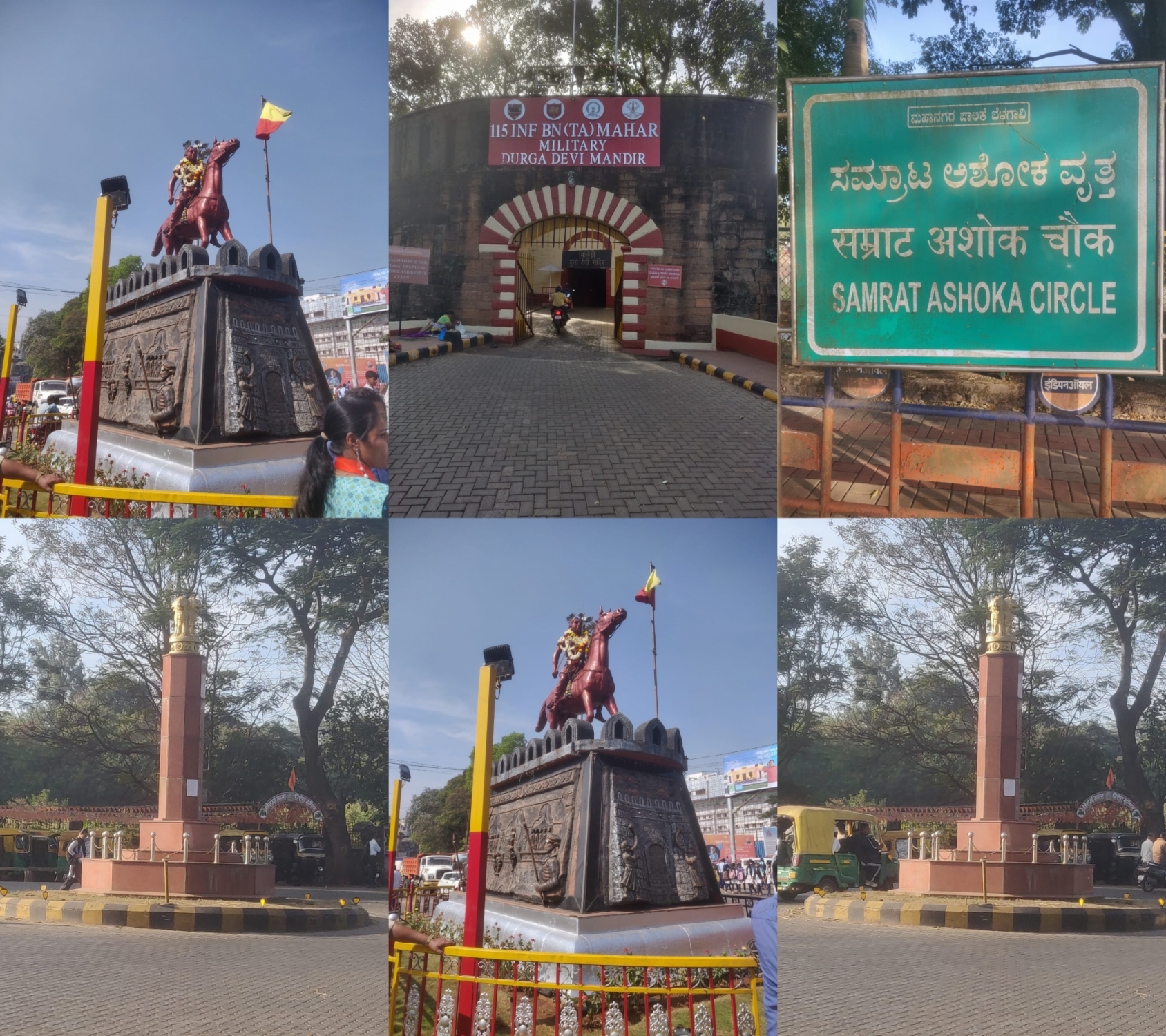Belagavi (Karnataka), Dec 10 (IANS) Belgaum, rechristened Belagavi in 2014, was a part of the Mumbai Presidency before independence and it stayed with Bombay State post 1947, only to be handed over to Mysore, which later became Karnataka in 1973, following the States Reorganisation Act of 1956. The handover was the result of the movement for the unification of the Kannada-speaking regions of the old Bombay State and came on to the frontburner after the Mahajan Commission's report, which looked into this dispute, became public. The commission had given Belagavi city to Karnataka. Till date, the border dispute between Karnataka and Maharashtra has not changed. Ashok Chandaragi, who leads the Belagavi District Kannada Organisations Action Commission, said even late former Prime Minister Indira Gandhi, who enjoyed a two-thirds majority in Parliament, did not attempt to sort it out. "The Mahajan Commission, headed by retired Chief Justice Meher Chand Mahajan, was appointed in 1966 after senior freedom fighter Senapati Bapat launched an indefinite agitation till death in Mumbai," explained Chandaragi. "S. Nijalingappa was then the Chief Minister of Karnataka and the AICC president as well. V.P. Nayak was the Chief Minister of Maharashtra. Both were Congressmen and the party was in power at the Centre. The two chief ministers were called by the high command and directed that they should agree to the Mahajan Commission report," Chandaragi pointed out. The members of the commission toured for one year and along with the language issue they also considered administrative feasibility. They took not just a simple majority but relative majority into consideration. They gave the majority Marathi speaking region Chandgadh to Maharashtra and Belagavi to Karnataka. Belagavi's connectivity to Bengaluru by air and railway was also considered. The report was submitted on August 25, 1967. Nayak, the Maharashtra CM, backtracked when the report was made public and violence began. The report was presented before Parliament on December 12, 1970. There was no discussion and decision on the Mahajan report. Then PM Indira Gandhi did not take any call on the matter. The triple engine governments couldn't solve it. The Congress was in power in both the states and at the Centre. In 1985, the Maharashtra government sought the opinion of the Chief Justice of India, whether the matter could be taken to the Supreme Court and then petitioned the Apex Court. For 18 years, the issue of maintainability was not argued. Karnataka is arguing that as per Article 3, only Parliament has the power to decide state borders, boundaries or alterations to it. It is questioning how can the Supreme Court take up the matter? It has no jurisdiction and there is no merit in the suit. Maharashtra is arguing that under Article 131, anything can be questioned before the Supreme Court. If there are any legal fights between states, they can approach the Supreme Court. Maharashtra is claiming 865 villages and cities in five districts of Karnataka. However, the respondent number one in the case is the central government and Karnataka is respondent number two. The Attorney General of India should clarify before the court. The states are not at loggerheads. Before the Mahajan Commission, the central government had appointed the S.K. Dhar Commission in 1948 for the reorganisation of the states. The commission stated that it was not advisable to form states on a linguistic basis. Another committee was then set up with Jawaharlal Nehru, Vallabhbhai Patel and Pattabhi Sitaramaiah as members to look into the issue. It was called the JVP Committee. Their report stated that states could be formed on a linguistic basis, taking into consideration the administrative and commercial aspects. The movement for a separate state organised on a linguistic basis was then at its peak in Andhra Pradesh. Potti Sriramulu went on an indefinite protest fast for 60 days to demand statehood for Andhra Pradesh and died. This triggered a wave of violence, which, in turn, led to the birth of Andhra Pradesh in 1950. In 1952, the first general elections were held and the Congress, after coming to power, maintained silence on the matter. In 1953, Adaraguchi Shakare Gouda went on a fast until death in Hubballi asking for the formation of a Karnataka state. It was then that Nijalingappa approached the Central government and sought the formation of the state. To study the matter, the government formed a commission in 1953 led by Justice Fazal Ali and comprising Hridayanath Kunzru and Sardar K.M. Panikkar. It was after the commission presented its report that 14 states and six Union territories came into existence in 1956. Mysore, enlarged by the addition of Coorg State and the Kannada-speaking districts from western Madras Presidency, southern Bombay Presidency and western Hyderabad State, was one of these 14 states. And Belagavi went to Mysore, which was renamed Karnataka in 1973. After the Fazal Ali Commission's report was made public in 1956, Maharashtra started asserting its rights over Belagavi, which in turn sparked violence in Mumbai and Belagavi. The Central government thereafter formed a zonal council for the readjustment of states and appointed two representatives each from Karnataka and Maharashtra. They filed separate reports because consensus eluded them and this led to more violence. Maloji Shantaram Holkar, MES general secretary and former mayor of Belagavi, quotes Dr B.R. Ambedkar to argue that the organisation of states on linguistic lines in 1956 was flawed. The Karnataka government, he said, is not respecting the rights of the linguistic minorities in the state. "The agitation is for language, culture and spirit," Holkar said. Students other than Kannada speakers, he added, should take up Marathi as the mother tongue, Kannada as the state language and English.
From Belgaum to Belagavi, the genesis of a dispute
- by Rinku
- December 10, 2022 2 minutes

From Belgaum to Belagavi, the genesis of a dispute .











